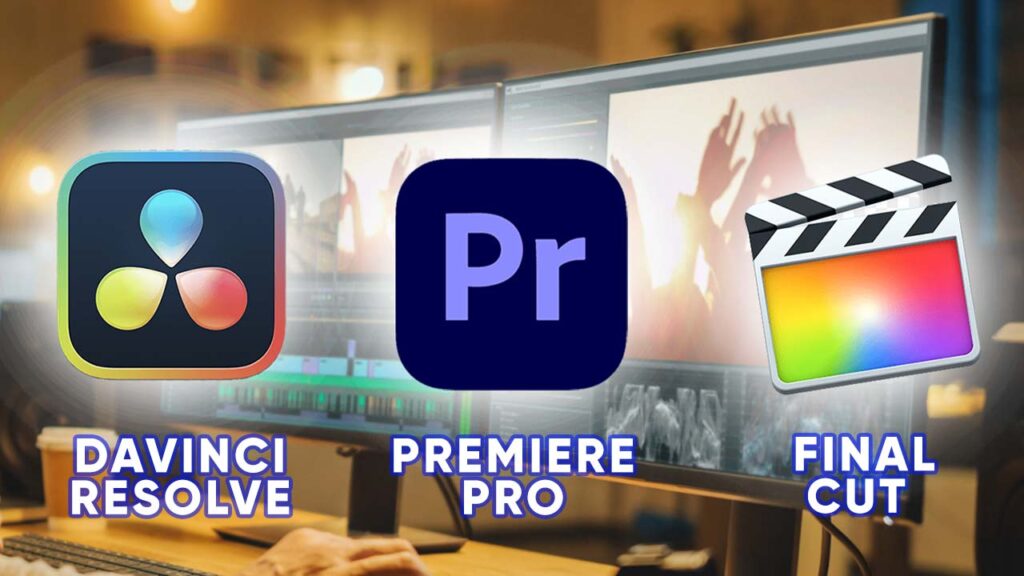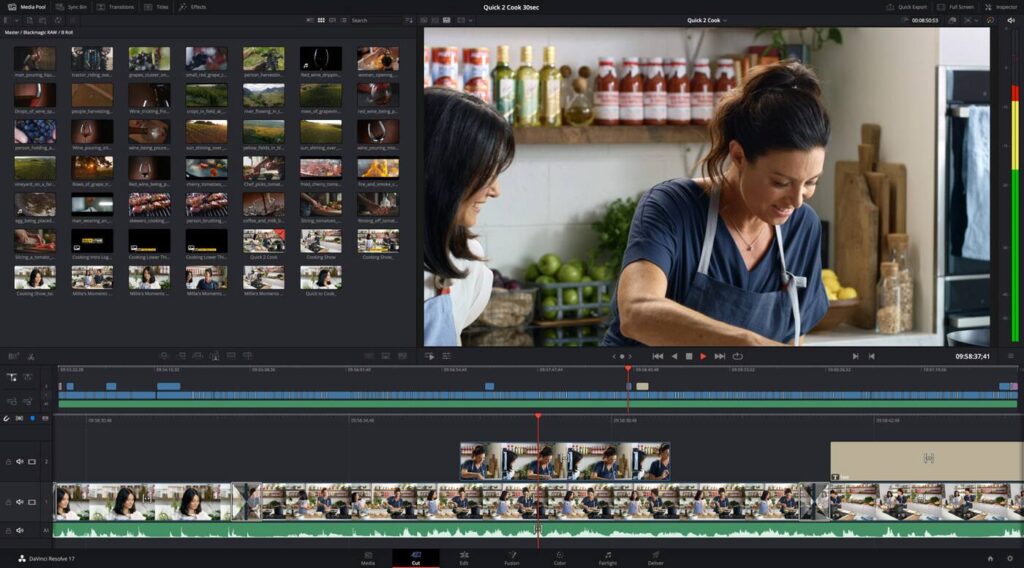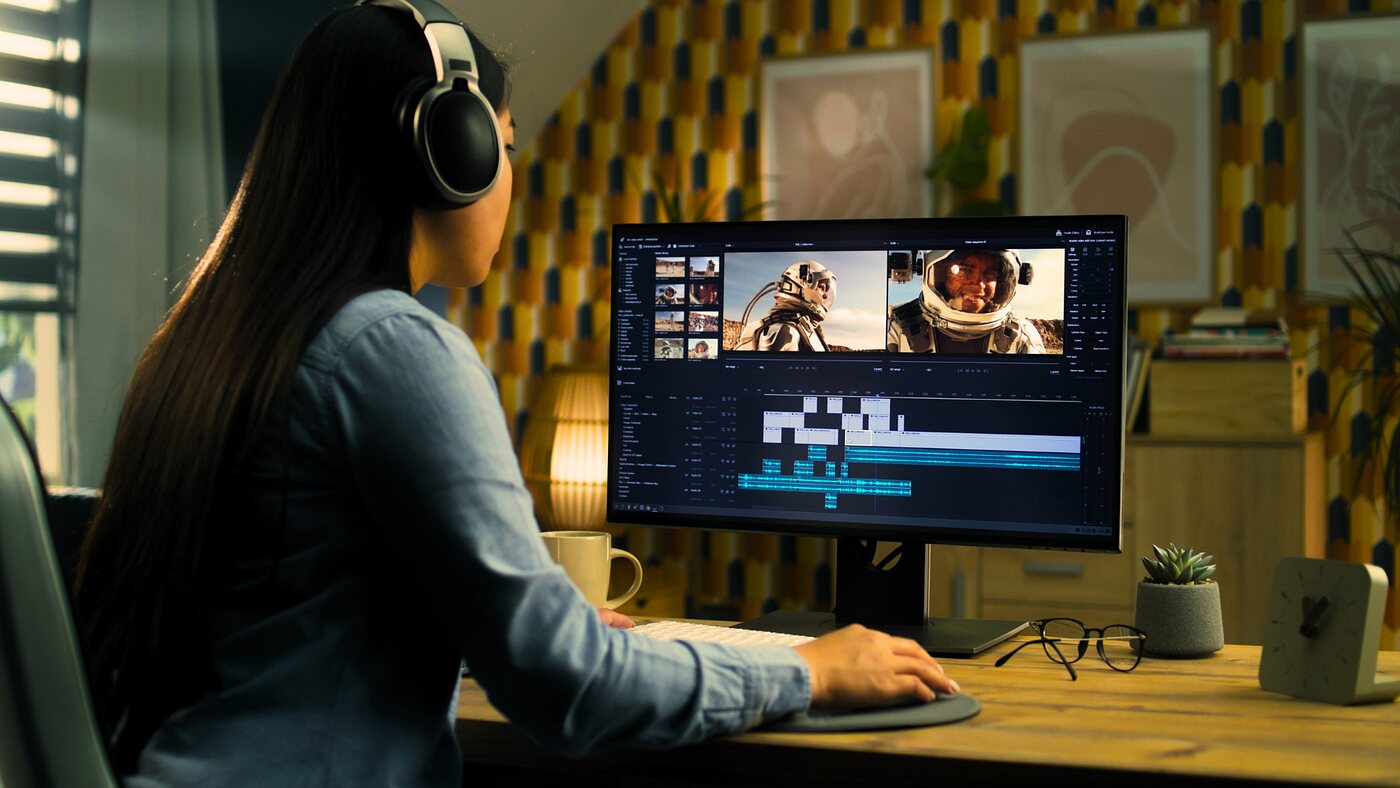Video editing has become an essential skill for creators across various platforms and mediums. Whether you’re a YouTuber, vlogger, filmmaker, or content creator for social media, the ability to edit your videos can elevate your content, engage your audience, and help you stand out in a crowded digital landscape.
In today’s content-driven world, video has emerged as a powerful storytelling tool. It allows creators to captivate their audiences with visually compelling narratives, share their experiences, and communicate their ideas in a dynamic and immersive way. However, the process of video editing is what transforms raw footage into a polished, cohesive, and engaging final product.
This comprehensive guide aims to provide creators with an in-depth exploration of video editing tools, techniques, and best practices. We’ll delve into a wide range of topics, including free and open-source video editors, mobile editing apps, specialized tools for specific niches, color grading and visual effects, audio editing, beginner-friendly software, platform optimization, and emerging trends in the video editing realm.
Whether you’re a seasoned creator or just starting your journey, this guide will equip you with the knowledge and resources to elevate your video editing skills, streamline your workflow, and create captivating content that resonates with your audience. So, let’s dive into the world of video editing and unlock the full potential of your creative vision!
Table of Contents
Essential Video Editing Tools
For creators looking to elevate their video content, a powerful and versatile video editing software is essential. While there are numerous options available, a few standout tools have become industry standards for professional video editing.

Adobe Premiere Pro is a widely used and comprehensive video editing suite that offers a robust set of features. Its intuitive interface, advanced color grading tools, and seamless integration with other Adobe Creative Cloud applications make it a popular choice among creators. Premiere Pro excels in handling complex projects, offering multi-cam editing, motion graphics integration, and advanced audio editing capabilities.
Final Cut Pro, developed by Apple, is a top choice for many creators working on macOS systems. Known for its user-friendly interface and efficient workflow, Final Cut Pro boasts impressive performance, advanced trimming tools, and powerful color correction features. Its magnetic timeline and intuitive editing tools make it a favorite among video professionals and enthusiasts alike.
DaVinci Resolve is a powerhouse in the video editing realm, combining professional-grade editing, color grading, visual effects, and audio post-production capabilities into one comprehensive package. While it offers a steep learning curve, DaVinci Resolve‘s node-based color grading tools and extensive support for various video formats make it a go-to choice for creators seeking high-end color correction and finishing capabilities.
These industry-leading video editing tools offer a wide range of features and capabilities tailored to meet the diverse needs of creators. From seamless editing and color grading to advanced visual effects and audio post-production, these software solutions empower creators to bring their creative visions to life with professional-quality results.
Free and Open-Source Video Editors
For creators on a tight budget or looking to explore video editing without a significant investment, free and open-source video editing tools offer a compelling alternative to paid software. These tools often come with a wide range of features and capabilities, making them suitable for both beginners and experienced editors.
One of the most popular free and open-source video editors is Shotcut. This cross-platform software supports a variety of file formats and offers a comprehensive set of tools for editing, color grading, and audio manipulation. Shotcut’s intuitive interface and extensive documentation make it an excellent choice for those new to video editing.
OpenShot is another free and open-source video editor that stands out for its user-friendly interface and robust features. It supports a wide range of file formats, offers advanced editing tools, and includes a vast collection of free video effects and transitions. OpenShot’s simplicity and ease of use make it a great option for beginners and casual editors.
Kdenlive is a powerful free and open-source video editor that rivals many paid alternatives. It offers a comprehensive set of tools for editing, color grading, and audio manipulation, as well as support for a wide range of file formats and codecs. Kdenlive‘s advanced features and customizable interface make it a popular choice among professional and semi-professional creators.
While free and open-source video editors offer numerous advantages, such as cost-effectiveness and flexibility, they may have some limitations compared to paid software. These tools often have fewer advanced features, limited support for specialized file formats, and potentially steeper learning curves. Additionally, free and open-source projects may have smaller development teams and slower update cycles compared to commercial software.
Despite these potential drawbacks, free and open-source video editors provide creators with a valuable opportunity to explore video editing without significant financial investment. They offer a great starting point for beginners and a cost-effective solution for those with limited budgets. As with any tool, it’s essential to evaluate your specific needs and preferences before choosing a video editor.
Mobile Video Editing Apps
Creators on-the-go often need powerful yet portable video editing tools, and mobile apps have risen to meet this demand. While desktop software offers more comprehensive features, mobile video editing apps provide impressive capabilities for shooting, editing, and sharing videos directly from your smartphone or tablet.
One of the most popular and feature-rich mobile video editors is LumaFusion. This iOS app packs a punch with advanced tools like multi-track timelines, chroma keying, audio editing, and support for various resolutions and frame rates. LumaFusion’s intuitive interface and extensive features make it a favorite among professional videographers and YouTubers.
Adobe’s Premiere Rush is another powerful contender, available for both iOS and Android. It seamlessly integrates with other Adobe apps, making it a great choice for those already familiar with the Creative Cloud ecosystem. Premiere Rush offers features like multi-camera editing, motion graphics templates, and easy sharing to popular platforms.
For those seeking a more budget-friendly option, VivaVideo is a versatile free video editor for Android and iOS. While it lacks some advanced features, VivaVideo provides a user-friendly interface, basic trimming and splicing tools, and a library of filters, transitions, and music. It’s an excellent choice for quick edits and social media content.
Mobile video editing apps often have limitations compared to desktop software, such as reduced track counts, fewer advanced effects, and potential performance constraints on older devices. However, their portability and ease of use make them invaluable tools for creators who need to capture, edit, and share videos on-the-go.
Video Editing for Specific Niches
As a creator, your video editing needs may vary depending on the type of content you produce. While some tools offer a wide range of features suitable for various purposes, certain niches might require specialized software or tools to cater to their specific requirements. Here are some popular video editing solutions tailored for different types of creators:
Vloggers and YouTubers: Tools like Adobe Premiere Pro, Final Cut Pro, and DaVinci Resolve are widely used by vloggers and YouTubers. These applications offer advanced features for editing, color grading, and visual effects, allowing creators to produce high-quality, polished videos. Additionally, tools like Filmora and Movavi offer user-friendly interfaces and templates specifically designed for vloggers.
Gamers and Streamers: For gamers and streamers, software like OBS Studio, XSplit, and Streamlabs OBS are popular choices. These tools enable capturing gameplay footage, adding overlays, transitions, and even live streaming capabilities. They often integrate with popular game streaming platforms like Twitch and YouTube Gaming.
Musicians and DJs: Video editing tools like Adobe Premiere Pro, Final Cut Pro, and DaVinci Resolve are commonly used by musicians and DJs for creating music videos, live performance recordings, and promotional content. These tools offer advanced audio editing capabilities, beat-sync features, and support for importing and syncing audio tracks seamlessly.
Photographers and Filmmakers: Professional-grade video editing software like Adobe Premiere Pro, Final Cut Pro, and DaVinci Resolve are widely adopted by photographers and filmmakers. These tools provide robust color grading tools, advanced video effects, and support for high-resolution footage and RAW video formats.
Social Media Influencers: Influencers often rely on user-friendly video editing apps like InShot, CapCut, and Videoshop for quickly creating engaging content for platforms like Instagram, TikTok, and YouTube Shorts. These apps offer templates, filters, and easy-to-use tools for trimming, adding music, and applying visual effects.
Remember, while some tools cater to specific niches, many creators also use a combination of different software and apps to achieve their desired results. The key is to explore and experiment with the tools that best align with your content creation goals and workflow.
Color Grading and Visual Effects
Color grading is an essential aspect of video editing that can elevate the overall look and feel of your content. It involves adjusting the colors, contrast, and tones of your footage to achieve a specific visual style or mood. Proper color grading can help create a cohesive and polished aesthetic, enhancing the storytelling and emotional impact of your videos.
Popular color grading tools include DaVinci Resolve, which is widely used in the industry and offers powerful color correction and grading capabilities. Adobe Premiere Pro and Final Cut Pro X also have built-in color grading tools that allow you to fine-tune the colors of your footage. Additionally, plugins like Magic Bullet Looks and FilmConvert can provide additional color grading options and presets.
Visual effects (VFX) are another important aspect of video editing, allowing you to create stunning and imaginative sequences. VFX can range from simple compositing and green screen effects to complex 3D animations and computer-generated imagery (CGI). Popular VFX software includes Adobe After Effects, which is widely used for motion graphics, compositing, and special effects. Nuke and Fusion are also powerful tools for advanced VFX work.
Plugins and add-ons can further enhance your VFX capabilities, offering pre-designed effects, particle systems, and other creative tools. Examples include Trapcode Suite, Video Copilot, and Sapphire. Additionally, online resources like Video Copilot and Motionarray offer a wide range of VFX assets and tutorials to help you create professional-looking effects.
Audio Editing for Videos
Audio is a crucial component of any video, and proper audio editing can significantly enhance the overall viewing experience. From removing unwanted background noise to adding music and sound effects, various tools and techniques are available to help creators elevate their video’s audio quality.
One of the essential aspects of audio editing is noise reduction and audio cleanup. Tools like Audacity, Adobe Audition, and iZotope RX offer powerful noise reduction capabilities, allowing creators to remove background hums, hisses, and other unwanted sounds. These tools often feature advanced algorithms and spectral editing capabilities, enabling precise noise removal without compromising the quality of the desired audio.
Another critical aspect of audio editing is audio enhancement. Equalization (EQ) and compression can help balance the audio levels, making dialogue more intelligible and music or sound effects more impactful. Tools like Adobe Premiere Pro, Final Cut Pro, and DaVinci Resolve offer comprehensive audio editing suites, allowing creators to fine-tune their audio tracks with precision.
Music and sound effects play a significant role in setting the mood and enhancing the overall viewing experience. Video editing software like Adobe Premiere Pro, Final Cut Pro, and DaVinci Resolve provide extensive libraries of royalty-free music and sound effects, making it easier for creators to find the perfect audio elements for their videos. Additionally, third-party libraries like Epidemic Sound, Artlist, and Premium Beat offer a vast collection of high-quality audio assets for creators to choose from.
For those seeking more advanced audio editing capabilities, dedicated digital audio workstations (DAWs) like Pro Tools, Logic Pro, and Ableton Live offer a comprehensive suite of tools for recording, editing, and mixing audio. These powerful software applications allow creators to create custom sound effects, compose original music, and precisely edit and manipulate audio tracks.
Ultimately, effective audio editing is essential for creating engaging and immersive video content. By leveraging the right tools and techniques, creators can enhance the overall quality of their videos, captivate their audience, and deliver a truly memorable viewing experience.
Video Editing for Beginners

For those just starting their video editing journey, the process can seem daunting. However, with the right tools and resources, beginners can quickly grasp the basics and create professional-looking videos. Entry-level video editing software often comes with intuitive interfaces, built-in tutorials, and a wide range of features designed for novice users.
One of the most popular beginner-friendly video editors is Wondershare Filmora. This software offers a clean, drag-and-drop interface, making it easy to import and arrange clips, add transitions, and apply basic effects. Filmora also includes a vast library of royalty-free music, sound effects, and video templates, allowing beginners to enhance their projects without needing advanced skills.
Another excellent option for beginners is Movavi Video Editor Plus. This user-friendly software provides a straightforward timeline-based editing experience, with tools for trimming, splitting, and merging clips. Movavi also includes a range of built-in filters, titles, and transitions, as well as support for popular video formats and resolutions.
For those on a tight budget, there are several free and open-source video editing tools available. Shotcut is a powerful yet accessible option, offering a comprehensive set of features, including multi-track editing, video filters, and support for a wide range of file formats. Additionally, Shotcut has an active community that provides tutorials and resources for beginners.
Regardless of the software chosen, beginners should take advantage of the wealth of video editing tutorials and resources available online. YouTube channels like “Video Creators” and “Film Riot” offer a vast library of beginner-friendly tutorials, covering everything from basic editing techniques to advanced color grading and visual effects.
Online communities, such as Reddit’s r/VideoEditing and various video editing forums, can also be invaluable resources for beginners. These platforms allow users to ask questions, share their work, and receive feedback from experienced editors, fostering a supportive learning environment.
Optimizing Videos for Platforms
Optimizing videos for different platforms is crucial to ensure your content reaches the intended audience effectively. Each platform has its own specifications and requirements, and tailoring your videos accordingly can significantly impact their performance and visibility. Here are some tips for optimizing videos for popular platforms:
YouTube:
- Resolution: Upload videos in at least 1080p for best quality, but 4K is recommended for future-proofing.
- Aspect Ratio: 16:9 is the standard widescreen aspect ratio for YouTube.
- Frame Rate: 24, 25, or 30 frames per second (fps) are common choices.
- Video Codec: H.264 is the recommended codec for YouTube.
- Audio Codec: AAC or MP3 are supported audio codecs.
- File Format: MP4 is the preferred file format for YouTube uploads.
Instagram:
- Resolution: Instagram supports up to 1080p, but 720p is a good balance between quality and file size.
- Aspect Ratio: Square (1:1) and vertical (4:5 or 9:16) videos perform well on Instagram.
- Video Length: Instagram Reels can be up to 90 seconds, while regular feed videos can be up to 60 minutes.
- File Format: MP4 is the recommended file format for Instagram videos.
TikTok:
- Resolution: TikTok recommends uploading videos at 1080p for best quality.
- Aspect Ratio: Vertical videos (9:16) are the standard for TikTok.
- Video Length: TikTok videos can be up to 10 minutes long, but shorter videos (15-60 seconds) tend to perform better.
- File Format: MP4 is the preferred file format for TikTok uploads.
Facebook:
- Resolution: Facebook supports up to 4K resolution, but 1080p is a good choice for most videos.
- Aspect Ratio: 16:9 is the standard widescreen aspect ratio for Facebook videos.
- Video Length: Facebook allows videos up to 240 minutes long.
- File Format: MP4 is the recommended file format for Facebook video uploads.
Additionally, it’s essential to optimize your video metadata, including titles, descriptions, and tags, to improve discoverability and search engine optimization (SEO). Regularly reviewing and adjusting your video settings based on platform updates and audience preferences can help ensure your content remains relevant and engaging.
Video Editing Trends and Advancements
The world of video editing is rapidly evolving, driven by technological advancements and the ever-increasing demand for captivating visual content. One of the most significant trends is the integration of artificial intelligence (AI) into video editing tools. AI-powered features like intelligent object removal, automatic color grading, and facial recognition are streamlining the editing process, saving creators valuable time and effort.
Virtual reality (VR) and 360-degree video editing are also gaining traction, allowing creators to craft immersive experiences that transport viewers into different worlds. These technologies are particularly valuable for industries like real estate, travel, and entertainment, enabling viewers to explore environments as if they were physically present.
Another emerging trend is the use of advanced motion tracking and compositing techniques, which enable seamless integration of visual effects and computer-generated imagery (CGI) into live-action footage. This opens up new creative possibilities for filmmakers, advertisers, and content creators, blurring the lines between reality and fiction.
Looking ahead, we can expect to see further advancements in cloud-based video editing solutions, which offer increased accessibility, collaboration, and scalability. Additionally, the integration of machine learning algorithms into video editing software could lead to more intelligent and intuitive tools, capable of analyzing and optimizing content for specific platforms and audience preferences.
As technology continues to evolve, video editing tools will become more powerful, efficient, and user-friendly, empowering creators to push the boundaries of storytelling and captivate audiences like never before.
Video Editing Workflow and Best Practices
Creating high-quality videos often requires an efficient and streamlined workflow. Developing a solid video editing workflow can save you significant time and effort, allowing you to focus on your creativity and storytelling. Here are some best practices and time-saving tips for an optimized video editing process:
Prepare and Organize: Before diving into editing, ensure that all your footage, audio files, graphics, and other assets are organized and easily accessible. Create a logical folder structure and consider using descriptive file names to streamline your workflow.
Invest in Powerful Hardware: Video editing can be resource-intensive, especially when working with high-resolution footage or applying complex effects. Invest in a powerful computer with a fast processor, ample RAM, and a dedicated graphics card to ensure smooth performance and minimize rendering times.
Utilize Proxy Editing: If you’re working with large video files, consider creating proxy files – lower-resolution copies of your footage. Editing with proxies can significantly improve performance and responsiveness, allowing you to work more efficiently. Once you’ve completed your edits, you can relink to the original high-resolution files for final rendering.
Leverage Keyboard Shortcuts: Familiarize yourself with the keyboard shortcuts in your video editing software. Mastering these shortcuts can significantly speed up your editing process, reducing the need for constant mouse movements and clicks.
Apply Non-Destructive Editing: Whenever possible, use non-destructive editing techniques. This means making changes without permanently altering the original source files, allowing you to easily undo or adjust your edits at any point in the process.
Utilize Presets and Templates: Many video editing applications offer presets and templates for common tasks, such as color grading, transitions, and titles. Leveraging these resources can save you time and ensure consistent results across your projects.
Batch Process and Automate: Look for opportunities to batch process or automate repetitive tasks. Many video editing tools offer features like batch rendering, transcoding, or applying effects to multiple clips simultaneously, streamlining your workflow and saving valuable time.
Collaborate and Review Efficiently: If you’re working with a team, establish a clear collaboration and review process. Take advantage of tools that allow for seamless sharing, commenting, and version control, ensuring that feedback is incorporated efficiently and minimizing the risk of miscommunications or lost work.
Backup and Archive: Regularly back up your project files and media assets to prevent data loss and ensure you can easily retrieve and continue working on past projects if needed. Consider implementing a robust archiving system for your completed projects, making it easier to repurpose or reference your work in the future.
By following these best practices and time-saving tips, you can optimize your video editing workflow, increase your productivity, and focus more on the creative aspects of your projects.
Video Editing Resources and Communities
The world of video editing is constantly evolving, with new tools, techniques, and trends emerging regularly. Staying up-to-date and connected with the video editing community can be invaluable for creators looking to hone their skills, collaborate, and stay ahead of the curve.
Online communities and forums dedicated to video editing provide a wealth of resources and opportunities for learning, networking, and collaboration. Platforms like Reddit’s r/VideoEditing, Vidmuze, and CreatorHub offer vibrant spaces where video editors and creators can share their work, ask questions, and receive feedback from peers and industry professionals.
These communities often host regular challenges, contests, and collaborative projects, encouraging members to push their creative boundaries and learn from one another. Many also feature tutorials, workshops, and educational resources contributed by experienced editors, making them invaluable hubs for skill development.
Collaboration platforms like Frame.io, Vimeo, and Wipster have revolutionized the way video editors work together, allowing for seamless sharing, feedback, and iteration on projects. These tools enable remote teams to collaborate in real-time, streamlining the editing process and facilitating effective communication.
Additionally, numerous online resources, such as blogs, YouTube channels, and podcasts, offer valuable insights, tips, and tutorials from industry experts. These platforms cover a wide range of topics, from mastering specific editing software to exploring creative techniques and staying updated on the latest trends.
By actively engaging with these communities and resources, video creators and editors can not only enhance their skills but also forge valuable connections, discover new opportunities, and stay inspired in their creative pursuits.
Conclusion
Video editing is an essential skill for creators in today’s digital landscape. By mastering the right tools and techniques, you can elevate your content, captivate your audience, and stand out in a crowded online space. Whether you’re a vlogger, filmmaker, marketer, or content creator in any niche, the ability to craft compelling visual stories is invaluable.
Throughout this comprehensive guide, we’ve explored a wide range of video editing tools, from free and open-source options to powerful paid software, catering to various platforms, skill levels, and specific needs. We’ve delved into the fundamentals of video editing, discussed advanced techniques like color grading and visual effects, and highlighted the importance of audio editing for creating immersive experiences.
Ultimately, the choice of video editing tools depends on your specific requirements, budget, and personal preferences. Some creators may thrive with user-friendly, intuitive software, while others may prefer more advanced, feature-rich tools. Regardless of your choice, continuous learning and practice are key to mastering the art of video editing.
Remember, video editing is not just about technical proficiency; it’s also about storytelling, creativity, and connecting with your audience. Embrace your unique voice and style, experiment with different techniques, and don’t be afraid to push boundaries. The world of video editing is constantly evolving, and staying up-to-date with the latest trends and advancements will keep your content fresh and engaging.
So, whether you’re just starting your video editing journey or seeking to refine your skills, embrace the tools and techniques that resonate with you. Collaborate with fellow creators, seek inspiration, and never stop learning. With dedication and passion, you can create captivating visual stories that leave a lasting impact on your audience.


